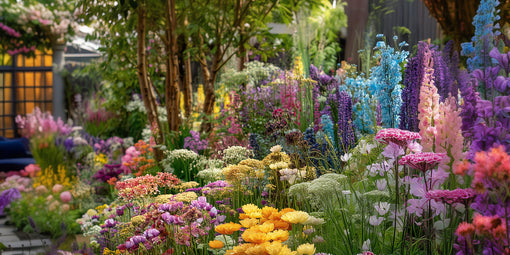Bouquets vs. letterbox flowers
Most of us have, at some point, bought a bouquet from a high street florist and it has long been the go-to way of flower gift giving.
Whether the occasion has been to celebrate your anniversary, a birthday or to bring with you to a friend’s dinner party. But when more and more shops and products are moving online, so is the flower industry.
In this post we’ll compare hand tied bouquets with online flower deliveries such as the letterbox flower trend and list the pros and cons of them both. So, you can make the best decision for you, when purchasing your flowers.
What is a bouquet?
A bouquet is traditionally flowers placed in a so called “spiral”, packed tight together and tied with a florist twine.
The stems are cut down relatively short to fit florists box bags. The flowers are usually chosen by the florists, and it can be a mix of all sorts of flowers or whatever the high street florist has in stock that particular day.
Pros & cons of bouquets
Pros
- The flowers are already prepared into a bouquet by experienced florists
- The flowers are wrapped in cellophane
- The flowers are (usually) delivered in box bags and water ‘aqua pack’, and does not have to be placed in new, fresh water for a few hours.
Cons
- The flowers will not be fresh and have sometimes been sitting in the shop for over 3 days before they’re made into a bouquet.
- Flowers are often reused from already made bouquets that’s been sitting in the shop and not been sold.
- The flowers are damaged from being tied too hard together into a bouquet, resulting in them dying quicker once they are placed in your vase.
- The bouquet is already cut into a certain height, and you are therefore limited to which vase you can use. If the recipient doesn’t have a vase that fits perfectly, the flowers will have to stay in the aqua pack and, as a result, only last a few days.
- The aqua pack can break causing water to pour out.
- The delivery is usually expensive.
- The delivery slots are limited and can usually not be made same day.
- You will not get an exact time slot for when the flowers can be delivered, and you will have to be at home all day to wait for the flowers.
What are letterbox flowers?
Letterbox flowers are a new concept of sending flowers for birthdays, anniversaries or just simply when buying flowers for yourself. The flowers come with an arranging guide, flower food, and are packed in boxes that fits through the letterbox.
Pros & cons of letterbox flowers
Pros
- Letterbox flowers are delivered through the letterbox, which means you (or the person you are sending them to) don’t have to wait at home for the flower delivery to arrive.
- You will receive a tracking link where you can track the flower delivery.
- The flowers are not cut down and the stems are left long so you can decide what length you want the flowers to be, to perfectly fit your vase.
- The flowers are packed-to-order and sent out in bud, which means they can last up to 3 weeks.
- The flowers are not pre-tied, and you can decide how your bouquet should look like.
- Flowers last longer than already made bouquets since the flowers are fresh, the stems are long damaged, the flowers are not cut down short.
- The flowers are not damaged in transportation since they are packed into boxes that protects them from rain or any other weather destruction.
- More cost effective.
- More practical when ordering regular flowers, such as a monthly flower subscription.
- The recipient gets the pleasure and the experience of being their own creative florist, so much fun!
Cons
- The flowers are not tied into a bouquet.
- If you wish to send a bigger bunch of flowers, they will be divided into 2 boxes or more depending on the size of the arrangement.
Bouquets vs. letterbox flowers - conclusion
As you can see, there are a lot of cons with sending ready-made hand-tied bouquets and there is a reason why letterbox flowers have quickly become a new trend that is here to stay.
Hand tied bouquets are an outdated and old fashion way of sending flowers to someone and it really is a waste of money considering the way that high street florists create these bouquets, with older flowers and little to no care of the delicate flower stems.




